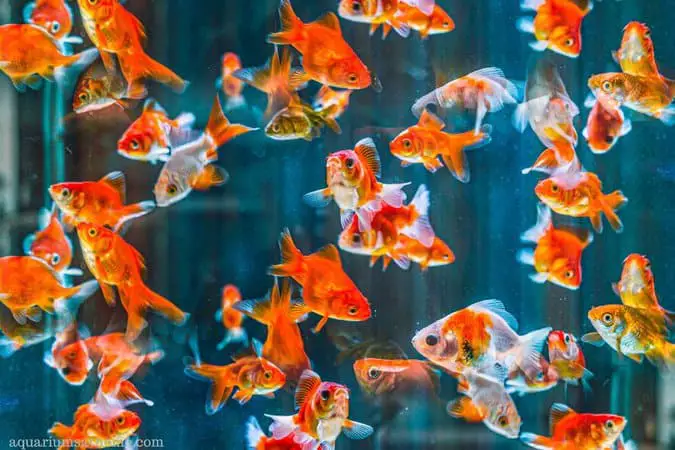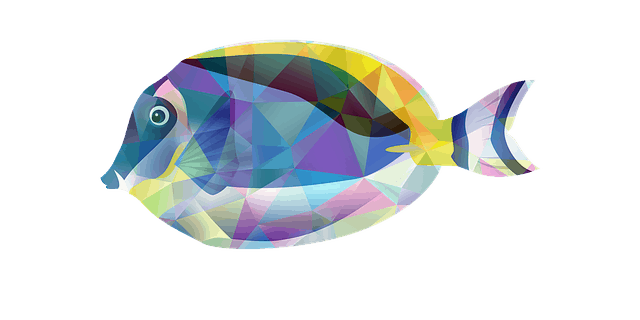Fish behavior is fascinating and studying it can teach us a lot about their relationships. One of the most interesting aspects is their tendency to form groups, whether it’s a loose congregation or a tight-knit group. In terms of aquarium fish, what exactly is the difference between schooling and shoaling?
Shoaling fish are those that stay together for social reasons. They swim somewhat independently yet still stay connected to each other. Schooling fish are those that swim together in the same direction and in a coordinated fashion.
Now that you know the biological differences between shoaling and schooling fish, let’s ‘dive deeper’ into this topic and explore the benefits, implications, and real-life examples of both behaviors, especially in captivity. We’ll also learn which species of shoaling and schooling fish are the hardiest, whether they have a ‘leader’, and what the advantages/disadvantages are to being in a shoal or school.
So, without further adieu, let’s begin!
What are Shoaling Fish in an Aquarium?
Shoaling refers to fish forming loose groups whereby individuals stay close to each other, but there ‘s no clear leader or hierarchy. Shoals are usually made-up of fish from the same species that are the same size and the same age.
Types of aquaria shoaling fish include barbs, cichlids, danios, and tetras. This behavior helps increase the chances of survival by helping to protect fish from would-be predators. When a hunter approaches a shoal, it becomes difficult to single out a target since they all typically look alike!
Shoaling can also improve foraging efficiency, as fish can work together to herd their prey. Shoaling fish are sociable by nature and won’t do well alone in a captive aquatic environment. They rely on each other to help find food faster and for security.
What are Schooling Fish in an Aquarium?
Schooling refers to fish forming tight groups in which individuals are closely aligned and often swim in coordinated patterns. Schools tend to have clear leaders and the group will often follow the movements of these individuals.
Types of aquaria schooling fish include angelfish, discus fish, gourami fish, and catfish. This behavior helps increase maneuverability by allowing fish to swim in close proximity while coordinating their movements.
Schooling also enables fish to make sharp turns and sudden changes in direction to avoid predation. It can help improve communication between individuals since fish often use visual and auditory cues to signal to one another.
What’s the Difference between Shoaling and Schooling Fish?
Shoaling and schooling are different in form and function. Shoals are a loose congregation of individuals whereas schools form tight-knit groups. Shoaling tends to lack a clear leader or hierarchy while schooling typically has a leader that the group follows.
Shoaling behavior is thought to increase survival whereas schooling behavior is believed to increase maneuverability and improve communication. That said, any group of fish is considered a shoal but not all shoals exhibit schooling actions.
Observing Shoaling and Schooling Behavior in an Aquarium
To observe shoaling or schooling behavior in an aquarium, a big enough aquarium with a large grouping of the same species of fish is necessary. Once you have this, you’ll find it easier to view shoaling or schooling activity in your tank.
When stocking aquarium fish, it’s essential to follow the general guidelines on how many to keep at any given time. For instance, the rule of thumb tends to be an inch of fish per gallon of water. This depends, of course, on both the temperament and activity level of the species in question.
How Many Shoaling Fish should be Kept Together in an Aquarium?
Most smaller aquarium fish like tetras, danios, and barbs should be kept in groups of at least 5 to 6. Less than 5 will only increase their stress level as well as make them more aggressive towards one another. Consider a minimum 10-gallon aquarium for a group of 5 or 6 small shoaling fish.

How Many Schooling Fish should be Kept Together in an Aquarium?
How many fish of the same species you choose to keep together in captivity will ultimately depend upon how big of a tank you have and the size as well as temperament of the fish. Typically, schooling fish are best kept in groups of at least 6.
Do Shoaling Fish in an Aquarium have a Leader?
It appears that shoaling fish may take turns being the leader of the group, depending on the nutritional needs of the fish. Hungrier fish tend to occupy the front the positions until they’re no longer famished. Once sustained, they’ll fall back and allow other fish to take the lead.
Do Schooling Fish in an Aquarium have a Leader?
Fish in a school can occupy one of four positions in the group. The leader up front and the followers at back edge right, back edge left, and back centre. While the back edge positions offer the best advantage for food retrieval, they also provide easiest access for predators.
What is the Hardiest Shoaling Aquarium Fish?
The hardiest shoaling aquarium fish include barbs, cories, danios, mollies, and swordtails. The key to longevity among shoaling fish is a clean, safe aquatic environment. The tank should be well maintained and free of toxins as well as large enough to house at least 6 fish of the same species.
What is the Hardiest Schooling Aquarium Fish?
The hardiest schooling aquarium fish include guppies, minnows, platies, rasboras, and tetras. To keep schooling fish healthy, ensure the tank is clean and big enough for at least 6 fish of the same species. Suitable (non-predatory) tankmates is also important.

What are the Advantages of being in a Shoal or School?
While shoaling and schooling behavior can increase a fish’s chances of survival in an aquarium, it’s not foolproof. Some predatory fish have been known to use coordinated hunting strategies to target and attack large shoals/schools of fish.
In addition to the benefits of increased survival and maneuverability, shoaling and schooling behavior can also have social benefits for fish. Studies have shown that fish can form social bonds with one another and that these bonds can have positive effects on the fish’s stress levels and overall well-being.
What are the Disadvantages of being in a Shoal or School?
Species from both groups need the company of others and won’t do well alone in a captive environment. As well, fish in shoals or schools can make for easier targets for predators since they tend to swim out in the open. They also tend to transfer disease faster and easier to each other due to their close proximity.
Shoaling and schooling fish also make for a dirtier tank environment since they excrete more waste than loner fish of the same size. They also deplete the oxygen levels in a tank more than single fish and may exhibit more aggression towards one another if the food supply is scarce.
Final Thoughts
Understanding the difference between shoaling and schooling behavior in aquarium fish is essential for hobbyists. By keeping enough of the same species of fish, we can create an environment that enables them to exhibit natural behavior.
When keeping shoaling or schooling fish in an aquarium, it’s important to ensure that the tank is large enough to accommodate the fish and their behavior/temperament. Overcrowding can lead to stress, disease, territoriality, and aggression.
I trust this article has helped you better understand the differences between shoaling and schooling fish in an aquarium. Thanks for reading and good luck with your aquarist hobby!




